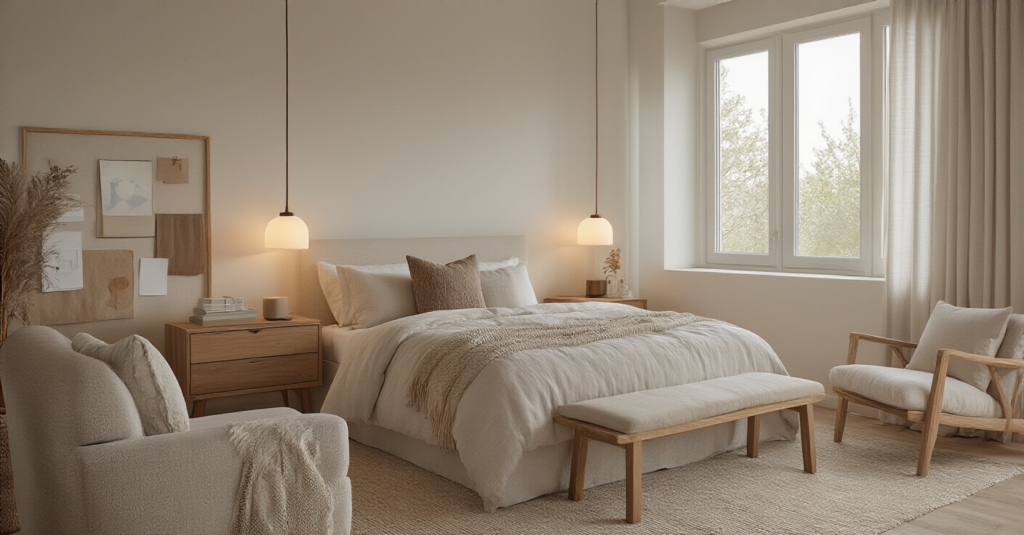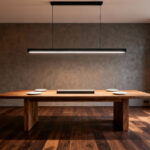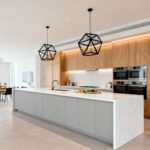You know what people always ask me? It’s not “What color is in right now?” It’s a quieter question, usually after they’ve told me how stressed they are. They’ll say, “My bedroom is just… a room. How do I make it feel like a place I can actually breathe?” And that’s the real question, isn’t it? It’s not about creating a showroom for a magazine; it’s about crafting an emotional and psychological retreat from the world.
Forget the corporate design-speak and the endless lists of “must-haves.” Your bedroom has one primary job: to be the one place on earth that supports your rest and recharges your spirit. Everything else is just noise. The secret isn’t a big budget; it’s being intentional. It’s understanding the why behind your choices. So let’s talk about how to do that, for real.
Section 1: Laying the Groundwork: Foundation & Planning
This is the part everyone wants to skip, but it’s where the magic actually happens. You wouldn’t build a house on a shaky foundation, so don’t design your most important room without a plan. Getting these fundamentals right means every other decision becomes a hundred times easier.
1. Define Your Sanctuary Style: Discover Your Ideal Aesthetic Direction
Before you even think about buying a pillow, I want you to ask yourself a question: How do I want to feel when I walk into this room? Not what style it should be, but what feeling you’re chasing. Is it “calm and airy”? “Cozy and cocoon-like”? “Minimalist and focused”? Write down three adjectives. This is your compass. Forget trying to name your style “mid-century modern” or “boho chic.” That’s marketing. What matters is the feeling.
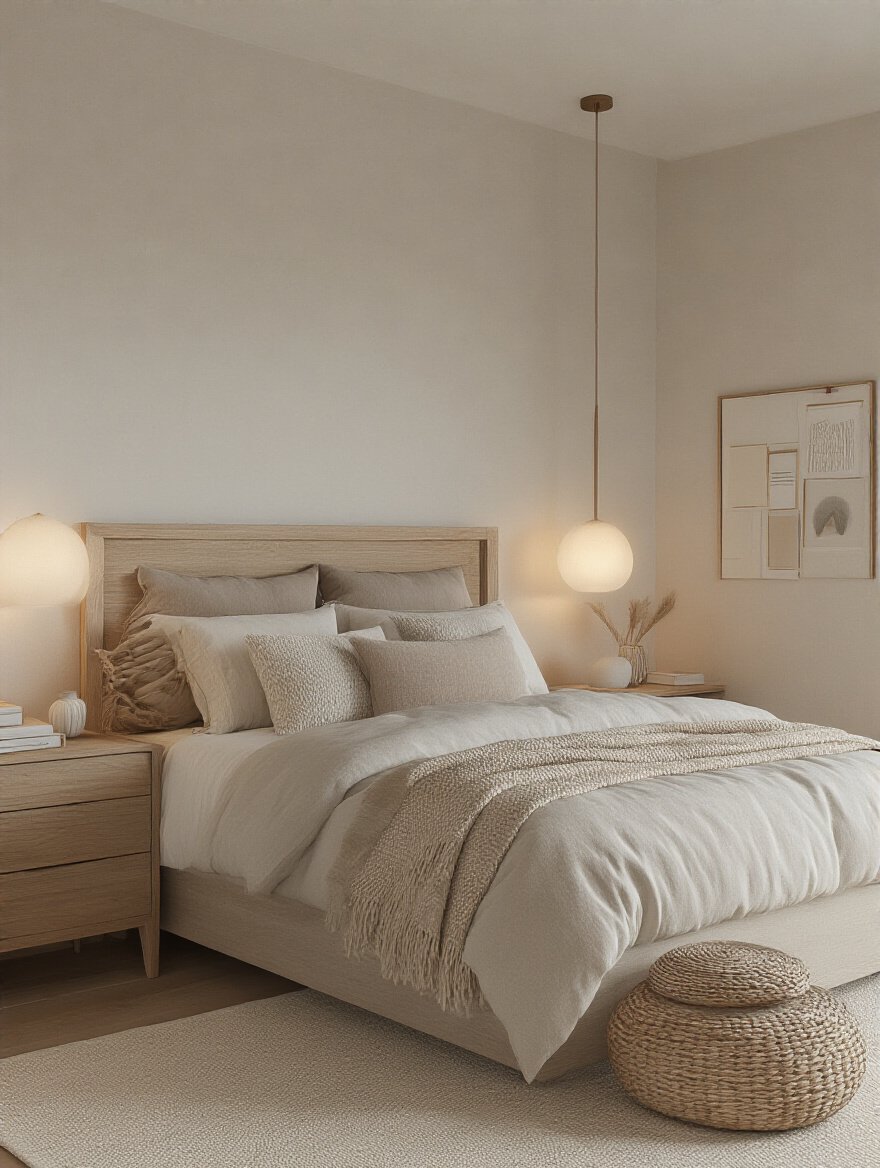
I once had a client who was paralyzed by indecision. Her Pinterest board was a mess of a dozen different styles. I told her to forget the pictures and just focus on the feeling. She wanted “serene, grounded, and uncluttered.” Suddenly, it was easy. We filtered every choice through that lens. Does this velvet headboard feel serene? No. Does this simple, natural oak bed frame feel grounded? Yes. See? It makes the hundreds of choices simple.
This is your shortcut. Stop looking for a style label and start defining a feeling. That’s how you create a room that resonates with your soul, not just with current trends.
2. Harmonize with Color: Selecting a Soothing Bedroom Palette
Can we talk about why so many people get bedroom color wrong? They paint a single, tiny swatch on the wall, decide they “like” it under the hardware store’s fluorescent lights, and then wonder why their bedroom feels like a hospital room or a cave. Your bedroom light changes dramatically from morning to night, and that color will change with it. The real secret is understanding the psychology of the color you’re choosing. Your brain is hard-wired to react to color. Cool colors—soft blues, greens, muted greys, and dusky lavenders—actually have a physiological effect. They can slow your heart rate and lower your blood pressure. Warm, vibrant colors do the opposite. A bright red or intense orange is a shot of caffeine for your nervous system. Great for a gym, terrible for sleep.
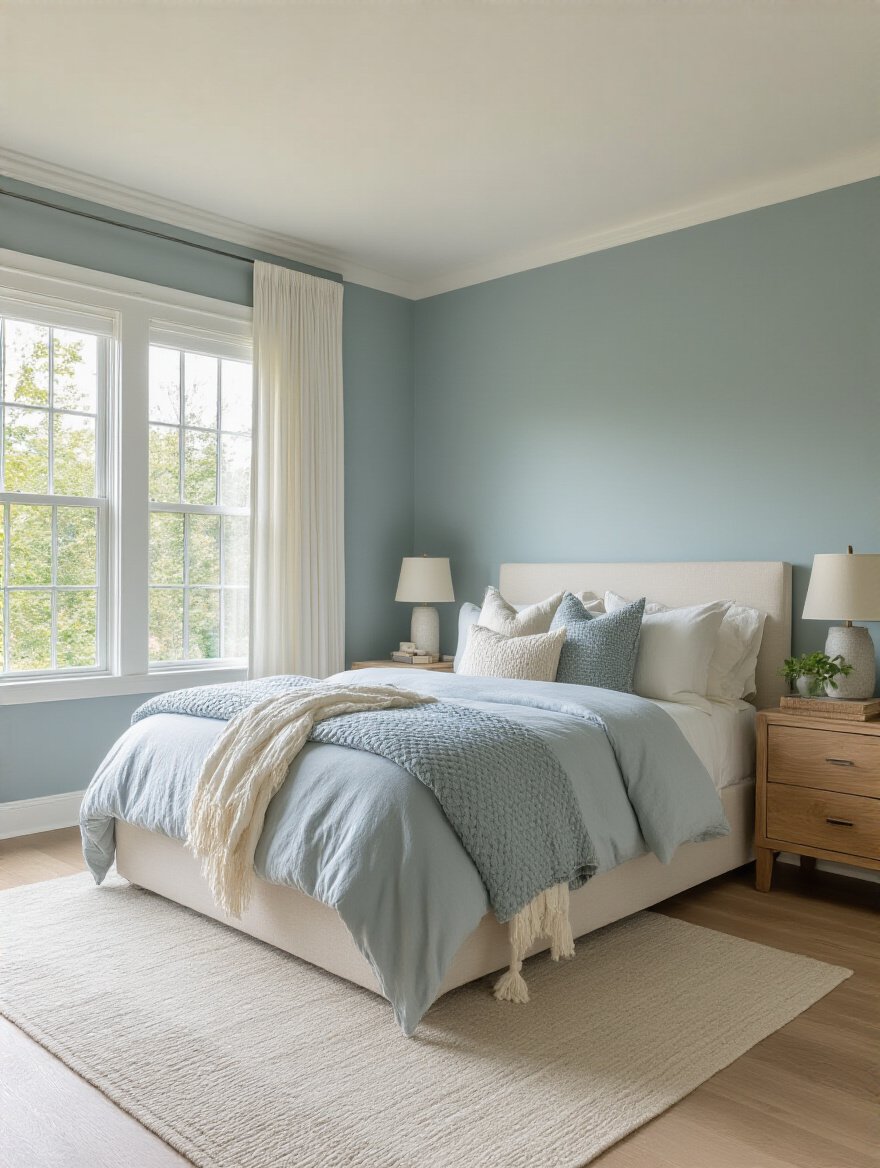
Here’s the shortcut you need to know: buy sample pots of your top two or three choices. Paint giant, two-foot-by-two-foot squares on at least TWO different walls (one that gets direct light and one that doesn’t). Then, live with them for 48 hours. See how they feel in the morning light, at high noon, and at night with your lamps on. That’s the only way to know if a color will truly create the sanctuary you’re looking for, rather than just being a color you saw online.
This deliberate approach to color is the single most powerful tool you have for setting the emotional tone of your sanctuary, which will be supported by a smart layout.
3. Optimize Your Layout: Arranging Furniture for Flow and Function
I once walked into a client’s bedroom and immediately felt a sense of anxiety. It wasn’t messy, but the path from the door to the bed required weaving around a huge dresser, and the space between the bed and the wall was so tight you had to turn sideways. Your brain registers these physical blockages as subconscious stress. A sanctuary needs to have clear, easy pathways. It needs to breathe. Feng Shui calls the ideal bed placement the ‘commanding position’—where you can see the door but aren’t directly in line with it. I call it common sense. You want to feel secure and in control, not surprised.
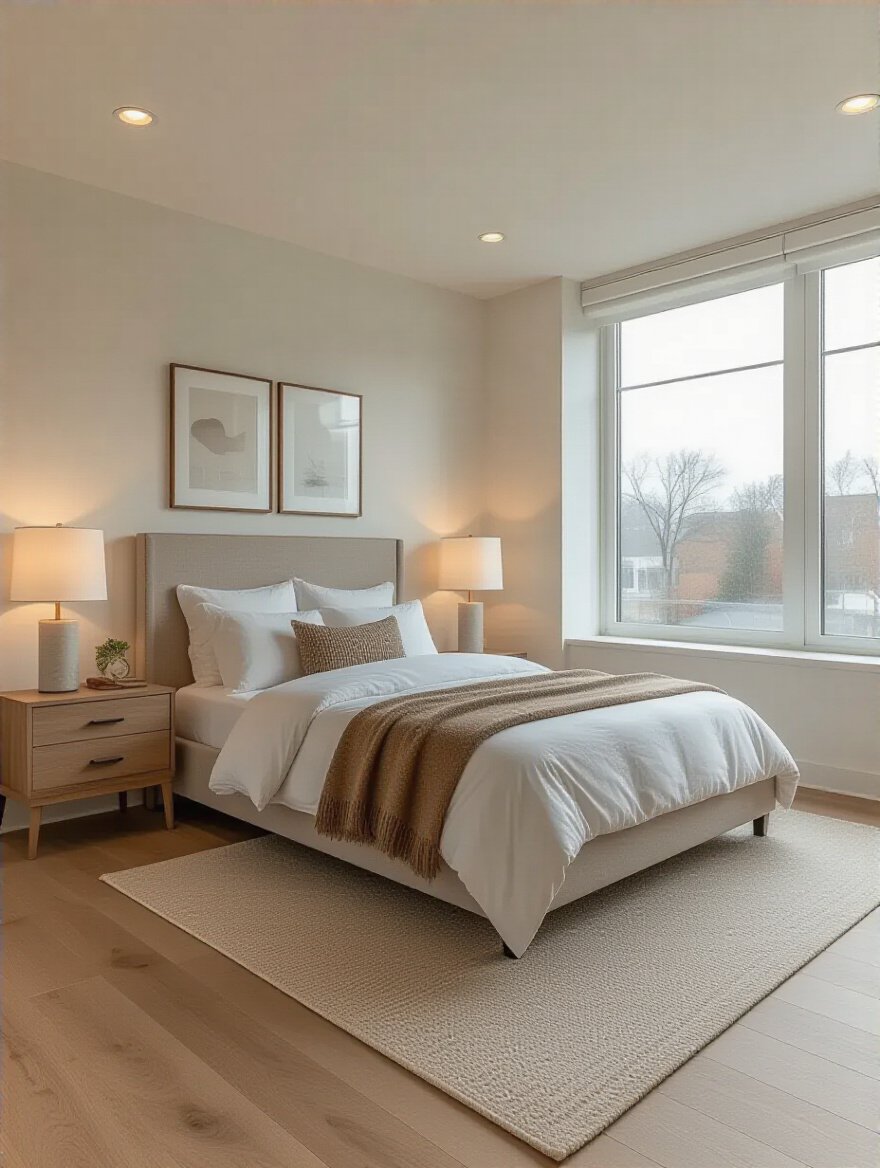
Here’s the shortcut I wish someone had told me years ago: use painter’s tape. Before you start shoving heavy furniture around, measure your big pieces (bed, dresser, chairs) and tape their outlines onto the floor. Then, walk the space. Does it feel open? Can you move easily from the door to the closet to the bed? You’ll immediately see where the problems are without breaking your back. A well-organized room with clear pathways sends a signal of calm and order to your brain.
An optimized layout gives you a physical sense of peace, and now we can layer in the right kind of light to enhance that feeling.
4. Strategic Lighting Zones: Enhancing Ambiance with Layered Illumination
Here’s the BS everyone seems to believe about lighting: that one bright overhead light (the dreaded “boob light”) is enough. It’s not. It’s harsh, it casts unflattering shadows, and it gives you zero options for creating a mood. A bedroom that serves as a true sanctuary needs layers of light. Think of it in three parts: Ambient (the general, soft overhead light), Task (focused light for reading in bed or at a vanity), and Accent (a soft glow from a small lamp or behind a headboard). This is what separates a sterile box from an inviting haven.
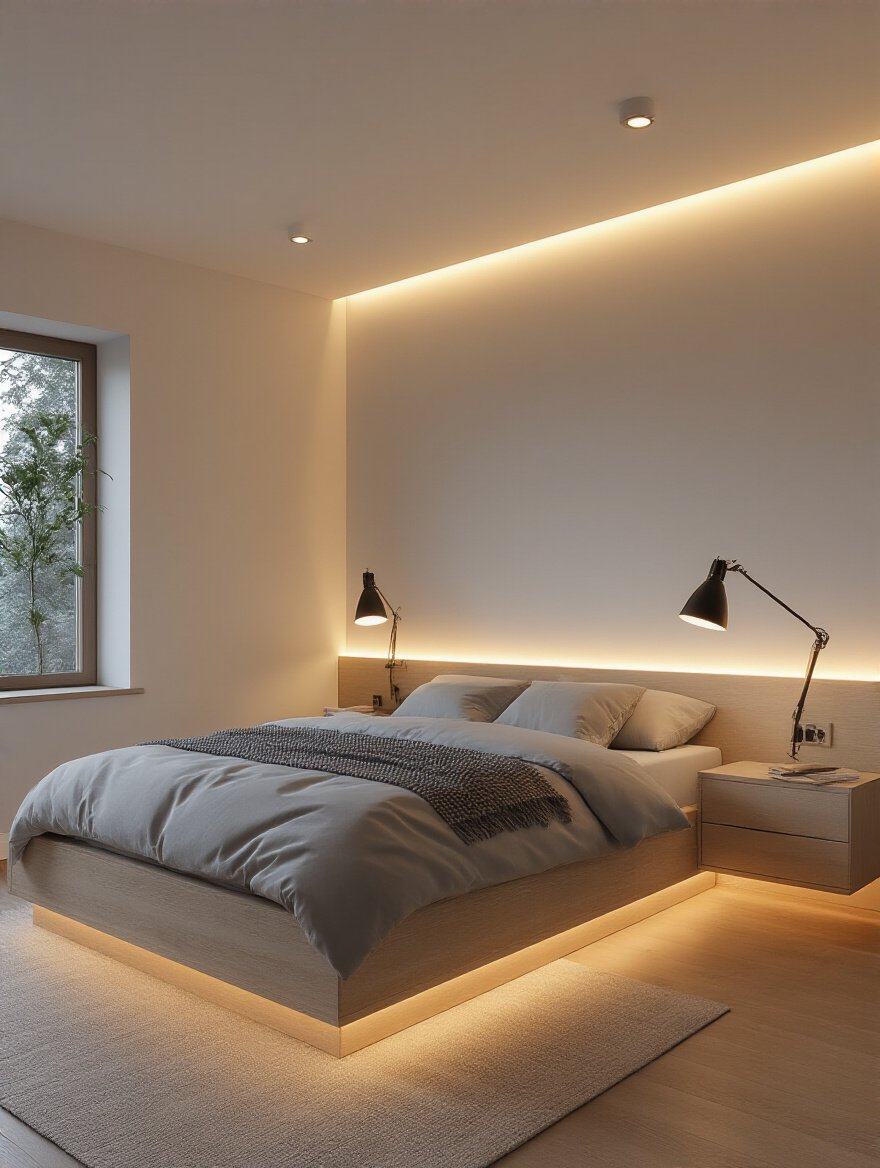
I learned this the hard way in my first apartment. I had one terrible overhead fixture, and my room always felt like a sad motel. The day I bought two cheap, warm-toned bedside lamps was a revelation. Suddenly, I could turn off the overhead glare and instantly the room felt cozier, more intimate, and ten times more expensive. Your shortcut is this: every light in your bedroom should be on a dimmer. Period. It’s a cheap upgrade and it gives you ultimate control over the mood, taking you from bright and functional for getting dressed to a soft, sleep-inducing glow at night.
Layered lighting gives you the power to completely change the feeling of your room on demand, which is essential as you furnish your personal oasis.
Section 2: Furnishing Your Oasis: Key Elements & Comfort
Now for the fun part: the stuff you actually put in the room. This isn’t about filling space. Each piece should pass a simple test: Does it make this room more comfortable, more functional, or more me? If not, it doesn’t belong in your sanctuary.
5. Invest in a Dream Bed: Choosing the Right Mattress & Frame
Your bed is not a piece of furniture; it’s a piece of health equipment. You spend a third of your life on it. Skimping here is like buying cheap running shoes and then wondering why your knees hurt. The most important investment you will ever make in your bedroom is a mattress that is genuinely right for your body and your sleeping style. Don’t be swayed by clever marketing or a cool brand name. How you feel after eight hours is all that matters. A great bed frame is important for setting the style, but the mattress is the engine of your sanctuary.
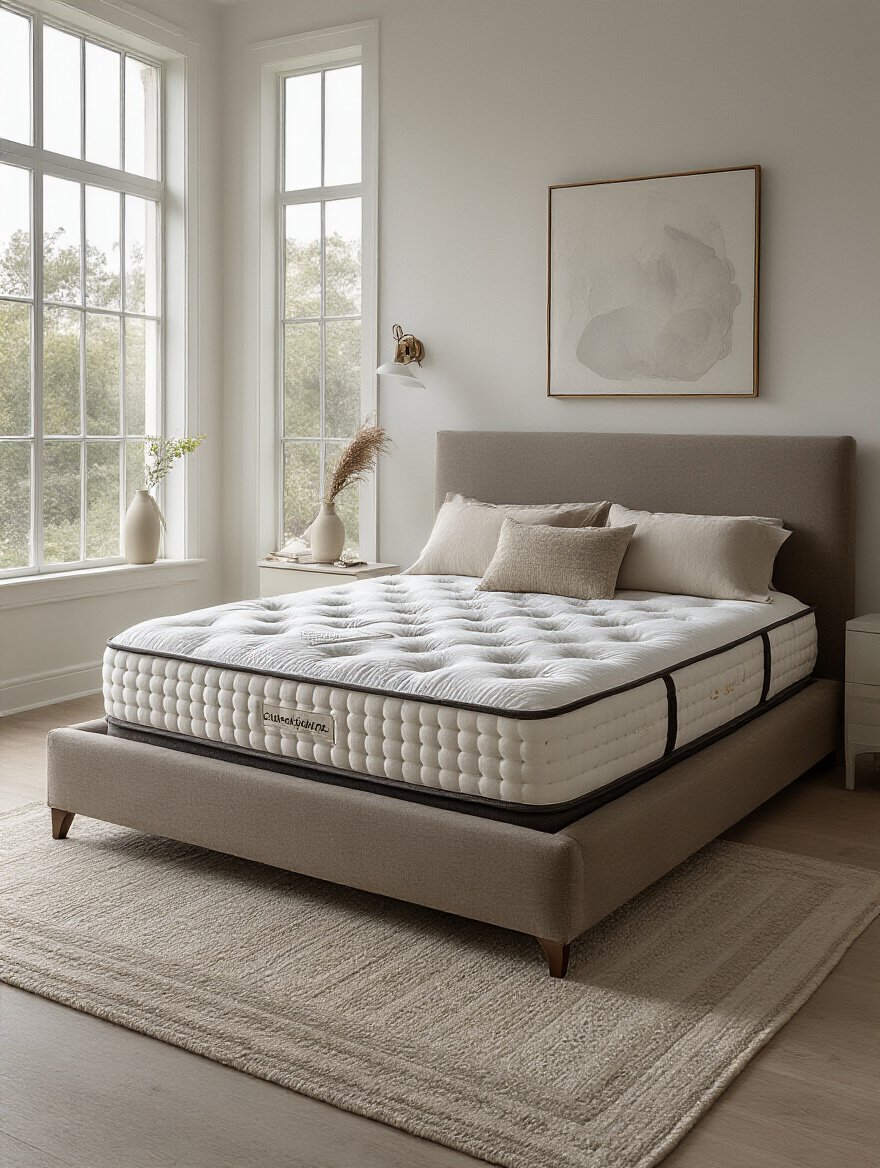
The biggest mistake I see is people being too shy to actually test a mattress. They lie down for 30 seconds, fully clothed, and say “seems fine.” No. Go to the store, lie down in your actual sleep position for at least 10 minutes, and ignore the salesperson. Even better, buy from a company with a long trial period (100 nights or more) and use it. If you’re not waking up feeling better, send it back. That trial period is your single greatest tool for finding the right fit.
Your bed is the absolute heart of your sanctuary, so making the right choice here is foundational to creating a truly restorative experience.
6. Luxurious Linens & Textiles: Elevate Comfort with Fabric Choices
Can we please bust the myth that thread count is the only thing that matters? It’s mostly a marketing gimmick. I’ve felt 800-thread-count sheets that feel like scratchy plastic and 300-thread-count sheets that feel like a cloud. What actually matters is the quality of the fiber (like long-staple cotton or linen) and the weave (like percale for a crisp, cool feel or sateen for a silky, smooth one). The right textiles are about creating a sensory experience. It’s the feeling of cool, breathable linen on a warm night, or the weight of a chunky knit throw blanket that makes you feel safe and secure.
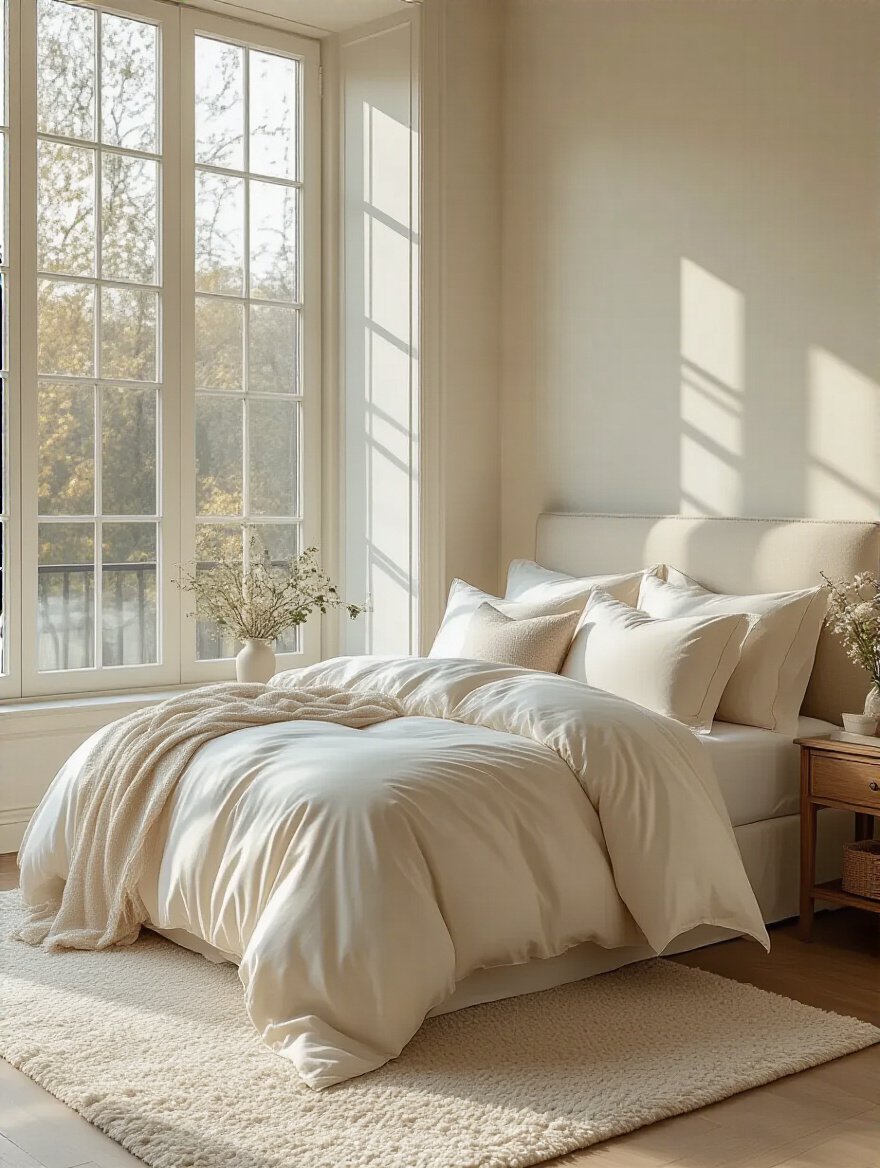
My personal “aha!” moment was switching to linen sheets. I sleep hot, and for years I just thought that was my life. The first night in linen, I slept through the night without waking up sweaty. The material is so much more breathable. That’s what I mean by choosing for function, not just looks. Think about how you sleep. Do you run hot or cold? Do you like a crisp feeling or a soft, buttery one? Answering those questions is your shortcut to finding linens that will genuinely improve your sleep, not just look good on Instagram.
Luxurious textiles are your first line of contact with comfort, setting the stage for an organized space free from mental and physical clutter.
7. Clever Storage Solutions: Maximize Space and Minimize Clutter
A cluttered bedroom means a cluttered mind. It’s that simple. Piles of clothes, stacks of books, and general “stuff” are sources of low-grade, constant visual stress that disrupt your ability to relax. But the solution isn’t just buying more bins. The real first step is a ruthless decluttering. If it doesn’t serve you, bring you joy, or belong in your sanctuary, it needs to go. Only then should you think about storage. Your goal is what I call “visual silence”—a place for everything, so your eyes (and your mind) can rest.
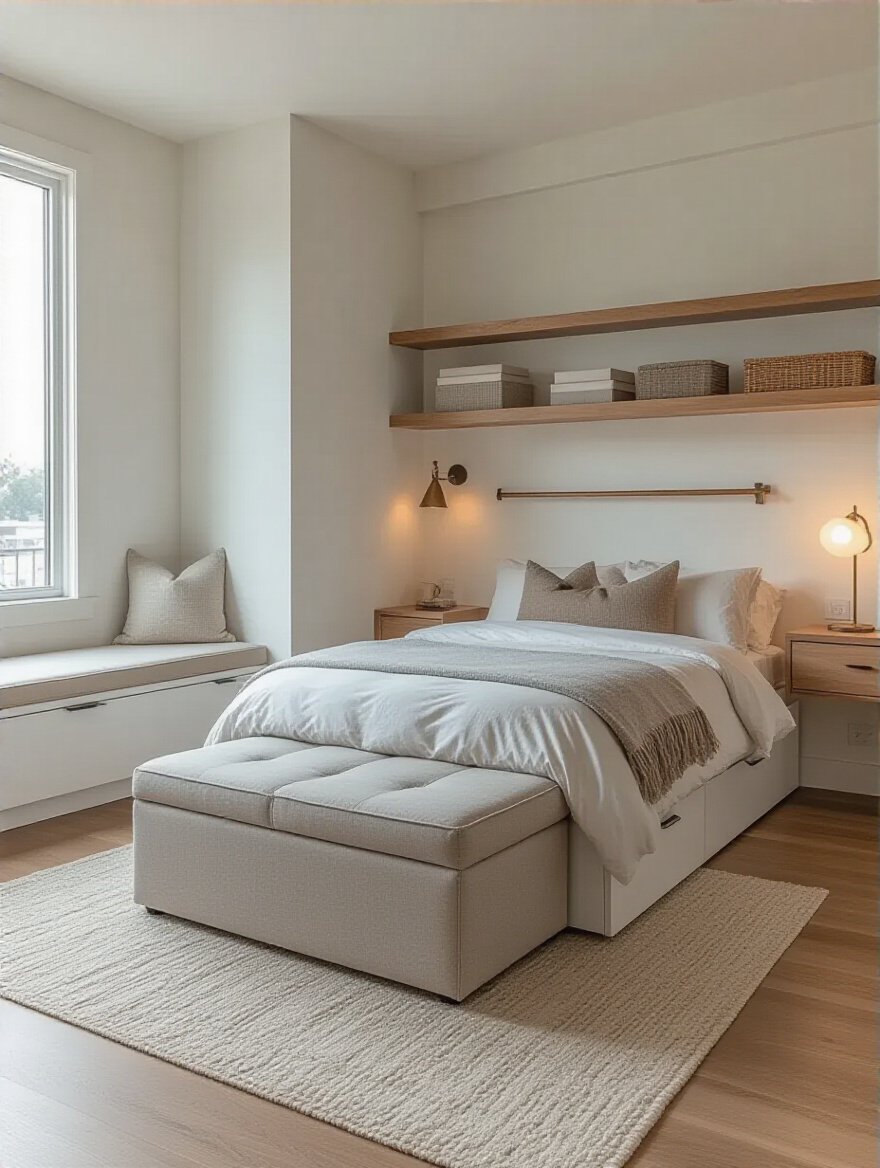
The best hack for achieving this is to stop thinking about adding more furniture and start thinking about making your existing furniture work harder. A bed frame with built-in drawers, an ottoman bench at the foot of your bed that secretly stores all your extra blankets, or floating shelves that use vertical space—these are the game-changers, especially in a small room. My favorite shortcut? “Invisible storage.” Look for solutions that blend in. Instead of a bulky dresser, could a storage bed eliminate the need for it entirely? The less “stuff” your brain has to process, the more peaceful the room will feel.
By getting your storage right, you create a baseline of calm that lets your personal touches—like your bedside essentials—truly shine.
8. Rethink Your Nightstands: Practicality Meets Decorative Style
Everyone thinks nightstands have to match the bed or each other. They absolutely do not. In fact, a mismatched pair often looks more curated and interesting. The only rule for a nightstand is that it should be the right height (roughly the same as the top of your mattress) and it should serve your real-life needs. It’s your little command center for winding down and waking up. Don’t let it become a clutter-magnet for junk mail and old water glasses.
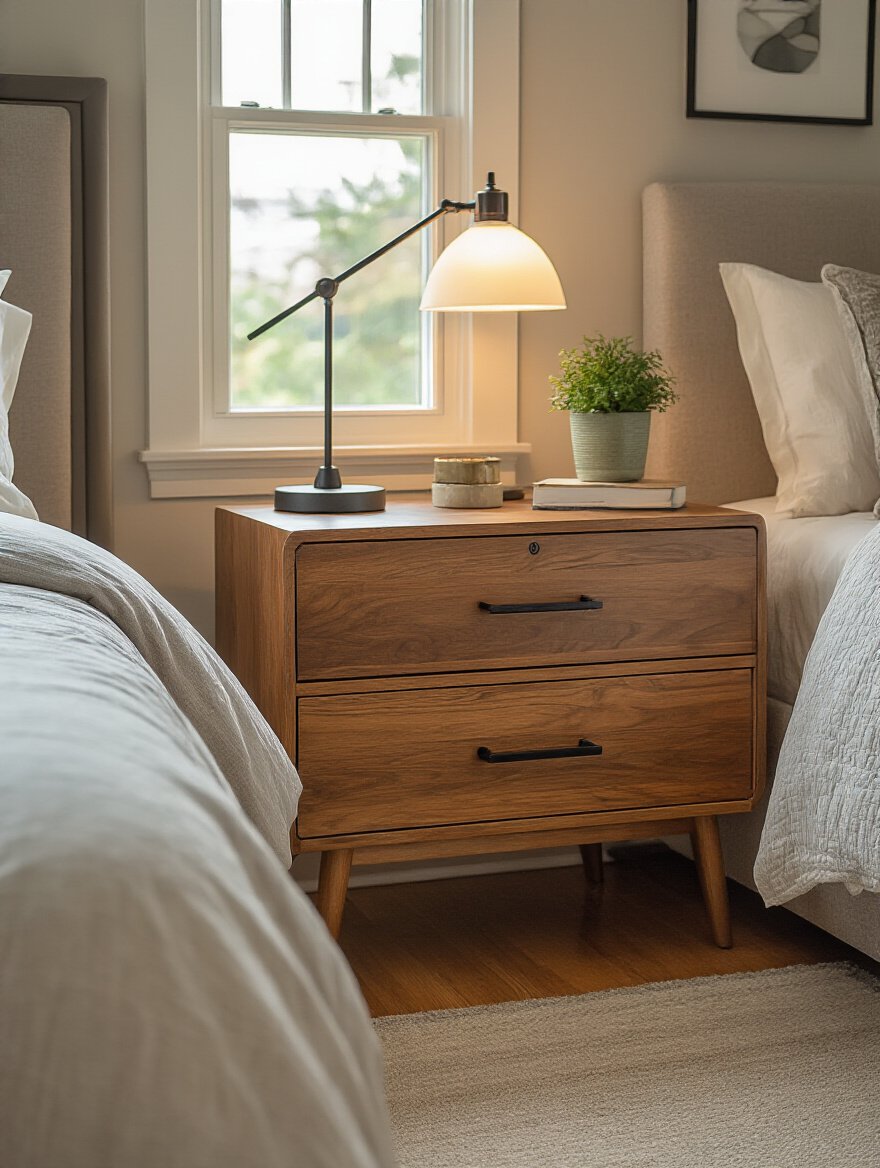
Your shortcut here is to get brutally honest about what you actually need within arm’s reach at night. For me, it’s a lamp, a spot for my phone to charge, my book, and a glass of water. That’s it. To keep things clean, my personal favorite hack is to look for nightstands with built-in charging ports or to mount a small power strip to the back. It instantly eliminates that ugly tangle of cords and makes the entire space feel sleeker and more intentional.
A well-organized nightstand provides calm and control right where you need it most, grounding your sleep space before you add textures underfoot.
9. Warm Up with Rugs: Define Zones and Add Underfoot Comfort
The single most common design mistake I see in bedrooms is a rug that’s too small. It’s what designers call a “postage stamp” rug. It just floats in the middle of the floor and makes the entire room look smaller and cheaper. A rug’s job is to anchor your bed and create a soft, warm foundation for the whole sleep zone. Your feet should be able to step out of bed and land on something plush and comforting, not a cold, hard floor.
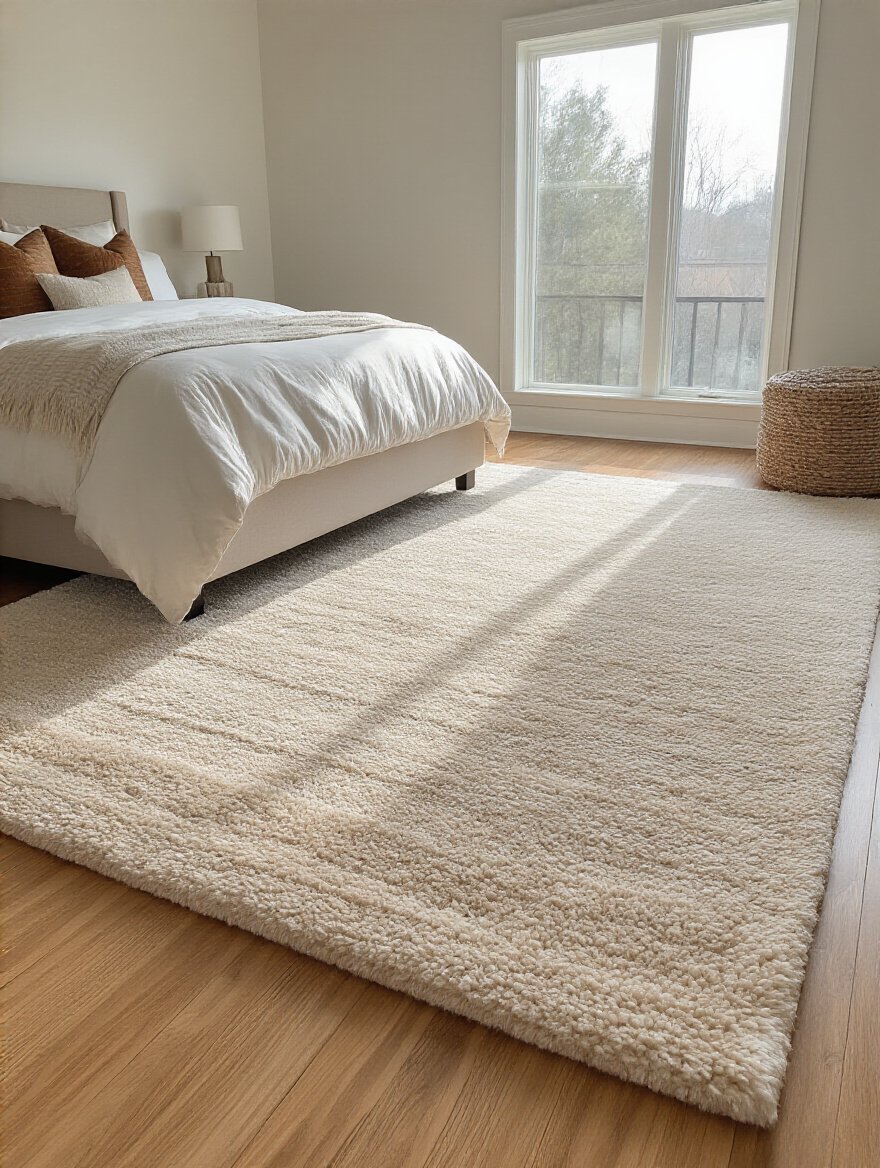
Here’s the rule that will save you from making this mistake: for a Queen or King bed, your rug should be large enough to extend at least 18-24 inches on all three sides (the left, right, and foot of the bed). That usually means an 8×10 foot rug, minimum. A larger rug actually makes the room feel bigger and more luxurious. It’s a bit counterintuitive, but it’s true. My shortcut for extra coziness? Layering. Place a large, inexpensive natural fiber rug (like jute) down first, and then layer a smaller, plush, more decorative rug on top. It adds incredible texture and depth.
With a soft and welcoming foundation established, you can now confidently begin to infuse your unique personality into the sanctuary.
Section 3: Infusing Personality: Decorative Accents & Artistry
This is where the room truly becomes yours. Your bedroom shouldn’t look like a hotel. It should be a reflection of your life, your memories, and your passions. These final layers are what turn a well-designed room into a soul-soothing sanctuary.
10. Curated Wall Art Gallery: Express Your Style with Visual Storytelling
Forget the idea that you need to buy “important” or expensive art. The art in your bedroom should simply be a collection of things that are meaningful to you. It’s your visual story. This could be family photos, prints from a favorite artist, postcards from your travels, your kid’s drawings—anything. A gallery wall is the perfect way to bring these disparate things together into a single, powerful statement that says, “This is me.”
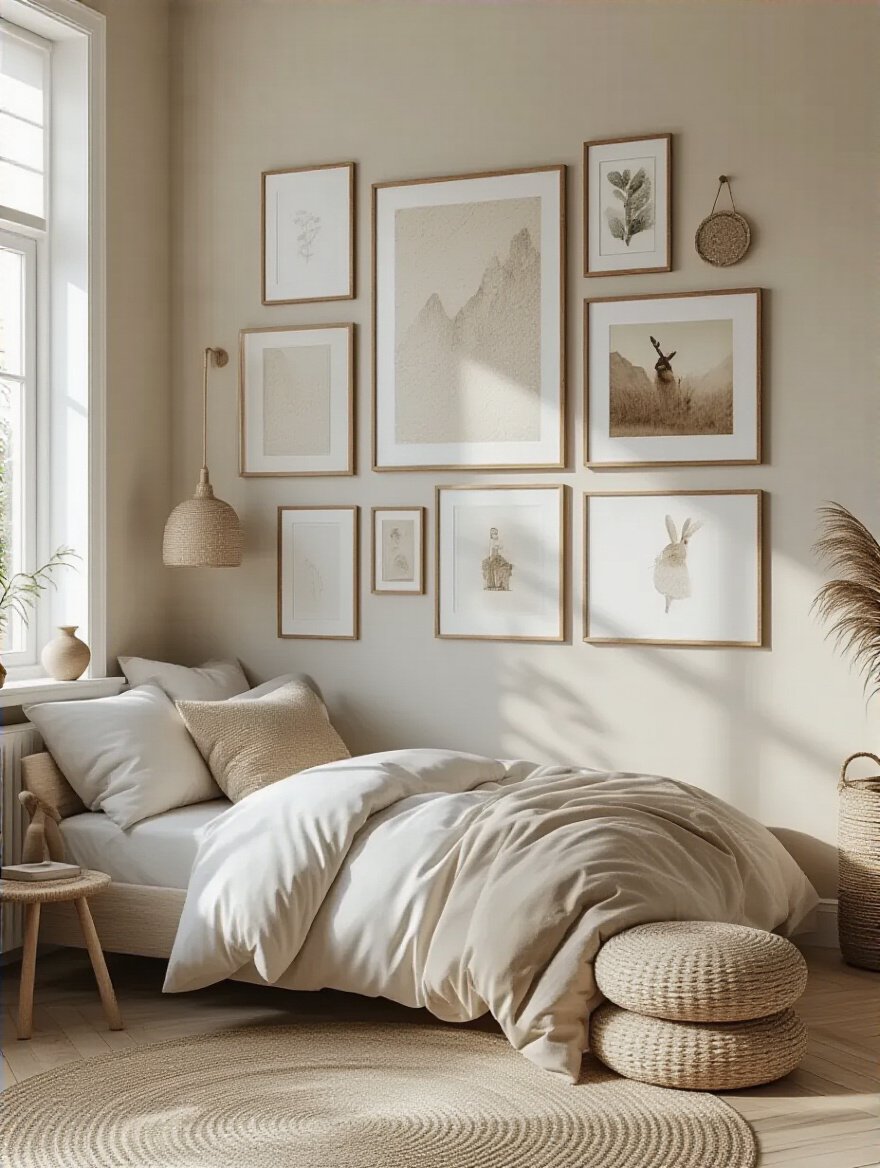
The biggest fear people have is putting a bunch of nail holes in the wall and getting it wrong. I get it. So here’s the game-changing shortcut pro designers use: brown paper and tape. Trace each of your frames onto brown kraft paper, cut them out, and tape the templates to the wall with painter’s tape. You can move them around as much as you want until the composition feels balanced and perfect. Only then do you hammer in the nails. It takes the guesswork and anxiety completely out of the process.
This kind of visual storytelling makes a room feel deeply personal and lived-in, just as bringing in natural elements can make it feel more alive.
11. Bring Nature Indoors: Add Serenity with Low-Maintenance Plants
There’s a reason we feel calmer when we’re in nature. It’s called biophilia—our innate human connection to the natural world. Bringing plants into your bedroom is one of the easiest and most effective ways to reduce stress, purify the air, and create a sense of living tranquility. You don’t need to turn your room into a jungle, but a few well-placed green companions can work wonders for your mental state.
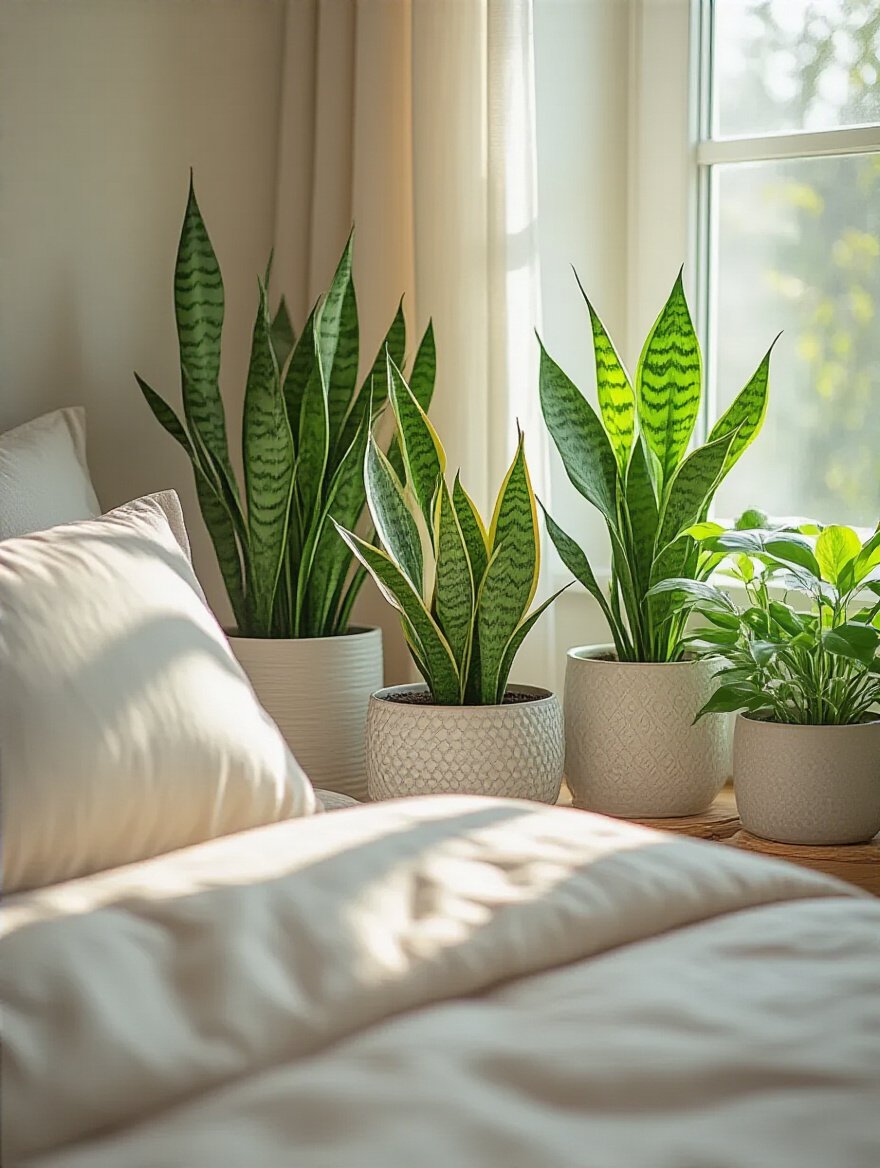
Don’t have a green thumb? Don’t worry. The key is to choose plants that thrive on neglect. My holy trinity of unkillable plants are the Snake Plant, the ZZ Plant, and the Pothos. They tolerate low light, infrequent watering, and basically want you to forget they exist. My best tip is to group them. A cluster of three small plants on a dresser has a much bigger visual impact than three scattered around the room. It creates a lush little moment that your eyes will be drawn to.
These living elements breathe life into your space, providing a perfect backdrop for the cherished items that tell your personal story.
12. Personalized Accessorizing: Display Cherished Items Thoughtfully
Your bedroom is the place for your most cherished possessions, but the goal is curation, not clutter. Displaying every single knick-knack you’ve ever received will create visual chaos. Instead, think like a museum curator. Select a few items that hold powerful, positive memories—a special rock from a hike, your grandmother’s jewelry box, a stack of your favorite books—and group them together in a little vignette on your dresser or a bookshelf.
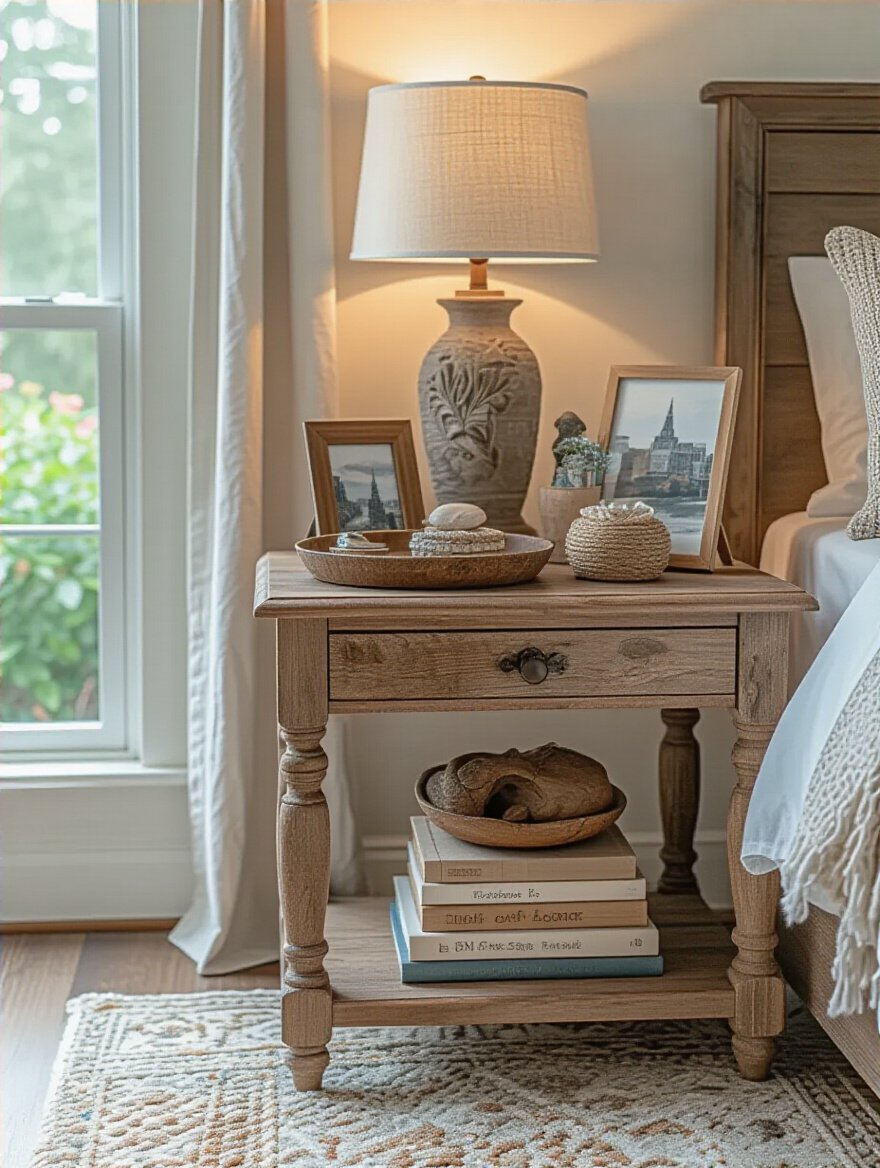
I have a client who struggled with this, so we implemented the “one in, one out” rule. If she brought a new decorative item into the bedroom, she had to choose one to put away. It forced her to be intentional about what she was displaying. Your shortcut to a professional look is to use trays. A simple tray can instantly corral a collection of small items (a candle, a small vase, a framed photo) and make them look like a deliberate, cohesive arrangement instead of just… stuff.
These personal touches ground the space in your history and identity, and their impact can be magnified by the right kind of light.
13. Embrace Ambient Glow: Incorporate Soft Task & Accent Lighting
We touched on the technical side of lighting earlier, but let’s talk about the emotional side. The right ambient glow can feel like a warm hug for your nervous system. This is about more than just lamps; it’s about finding creative ways to add soft, indirect light. Think fairy lights draped over a headboard, a salt lamp in the corner, or LED strip lighting placed behind your bed or under the frame to create a soft, floating effect.
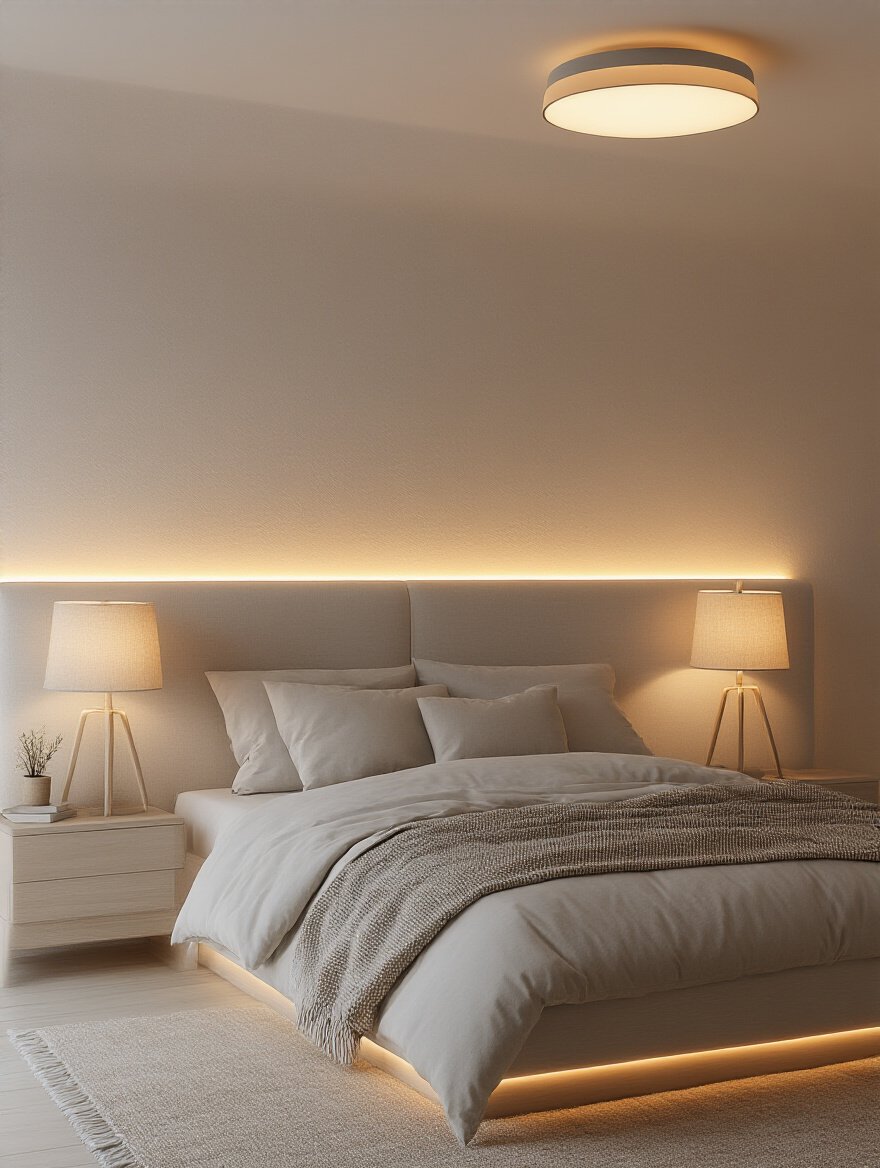
This isn’t just about looking cool; it’s about signaling to your brain that it’s time to wind down. My favorite “lazy” but effective trick is using smart plugs. You can plug all your accent lights into smart plugs and set up a “Good Night” scene. With one voice command or a tap on your phone, the overhead lights turn off, and all your soft, cozy accent lights turn on, instantly transforming the room’s atmosphere from functional to magical.
This magical glow, paired with control over natural light, allows you to master the ambiance of your sanctuary completely.
14. Window Treatments: Enhance Privacy and Control Natural Light
Your window treatments have two non-negotiable jobs: ensuring total privacy and controlling light. Everything else is secondary. Thin, flimsy blinds or unlined curtains that let light bleed in are undermining your sanctuary. Your brain needs darkness to produce melatonin, the hormone that signals it’s time to sleep. Even small amounts of street light or moonlight can disrupt this process.
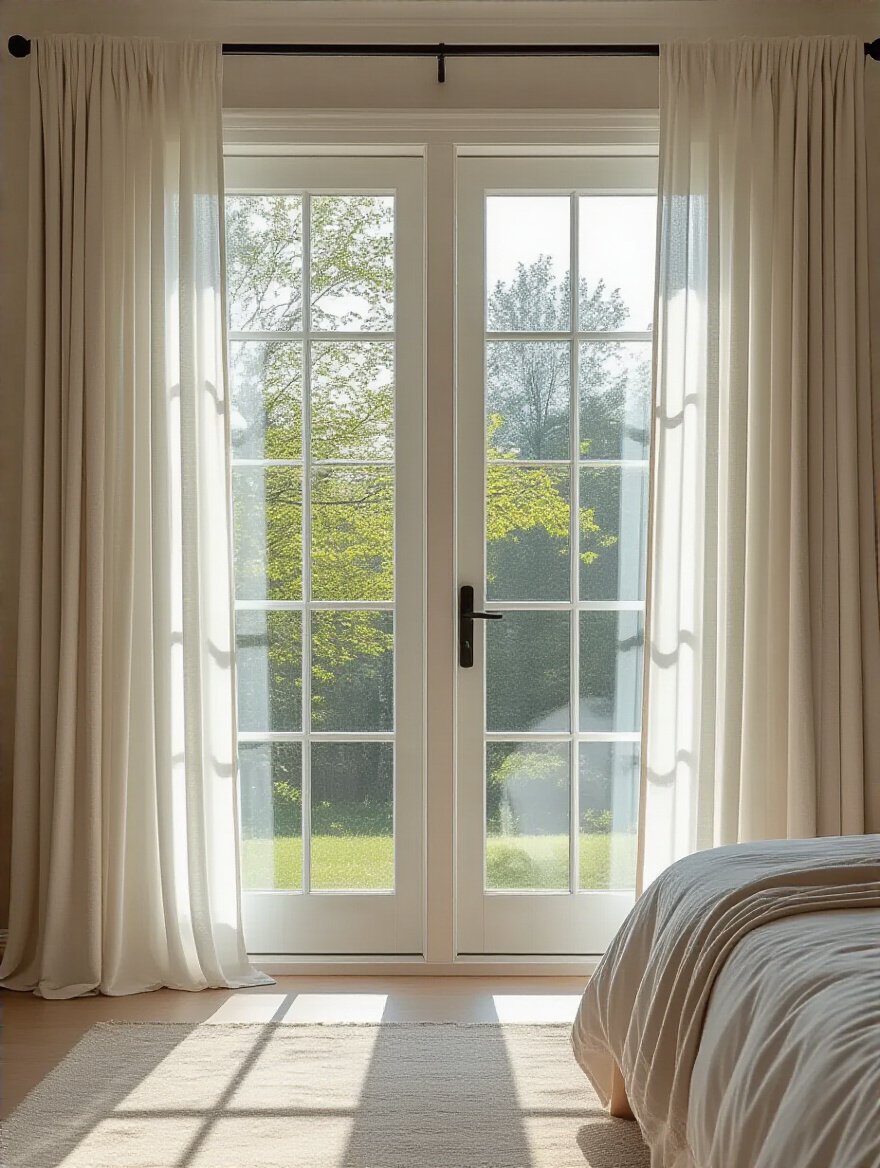
If you invest in one thing here, make it blackout capability. You can achieve this with blackout curtains or, my personal favorite, a layered approach. Install simple blackout roller shades inside the window frame for function, and then hang beautiful, decorative curtains over them for style. This gives you the best of both worlds: complete darkness when you need it for sleep, and soft, filtered light through the curtains when you want it during the day. It’s the ultimate combination of form and function.
Taking command of your windows gives you final say over the light and mood in your room, preparing you for the most advanced solutions.
Section 4: Elevated & Smart Solutions: Refinements for Ultimate Comfort
Once the essentials are in place, you can add a final layer of refinement. These are the touches that take your bedroom from great to truly extraordinary—a space that doesn’t just serve you, but anticipates your needs.
15. Integrate Smart Home Tech: Automate Comfort and Convenience Seamlessly
Smart home tech isn’t just for gadget geeks anymore. When used thoughtfully, it can be a powerful tool for wellness. Instead of thinking about it as “tech,” think of it as your personal assistant for creating the perfect sleep environment. Imagine a routine where, an hour before bed, your lights automatically dim and warm in color, a calming playlist begins to play softly, and your thermostat adjusts to the optimal temperature for sleep. This isn’t science fiction; it’s easily achievable with today’s tech.
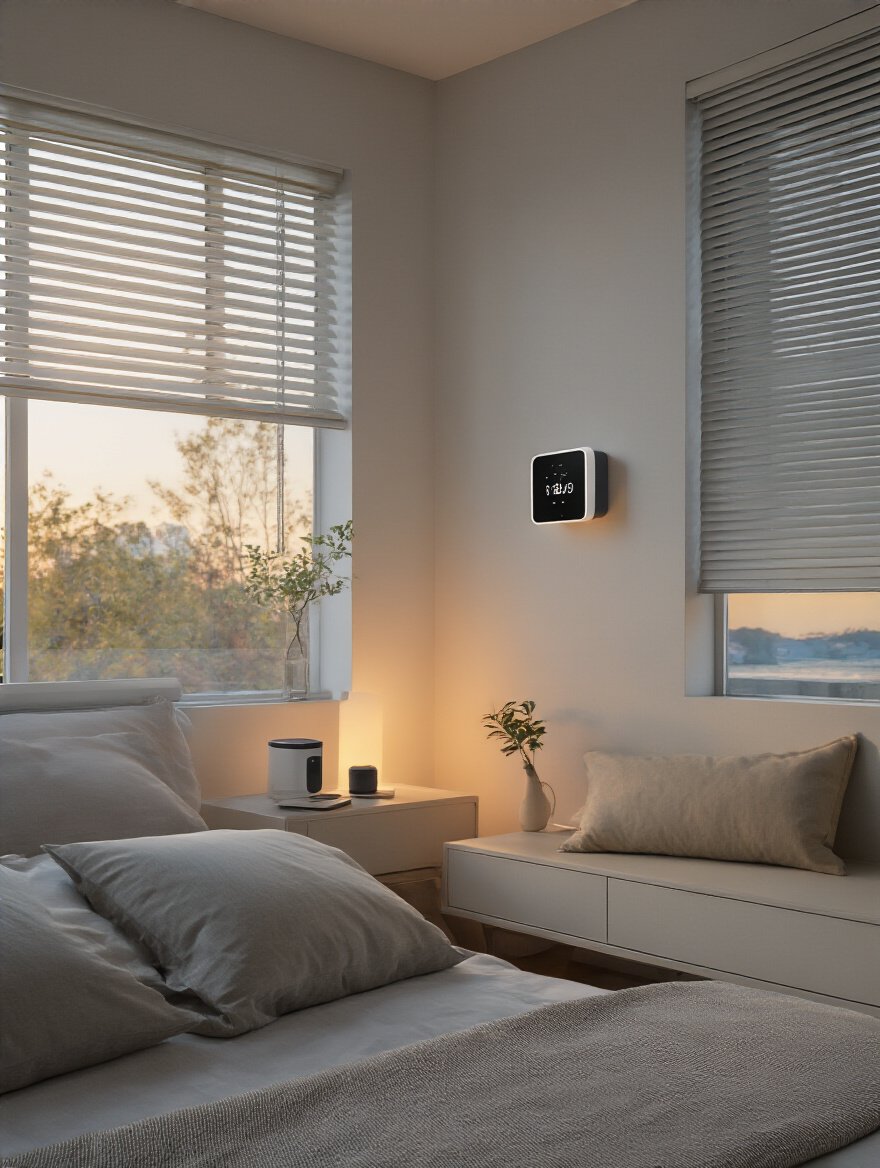
The secret is not to buy a bunch of random devices, but to choose a single ecosystem (like Google Home, Amazon Alexa, or Apple HomeKit) and build around it. The best shortcut is to start small. Get a few smart bulbs and a smart speaker. Create a simple “Good Morning” routine that slowly brightens your lights to mimic the sunrise. It’s a gentler, more natural way to wake up, and it’s a small change that can have a huge impact on how you start your day.
This kind of automation allows your bedroom to actively support your well-being, just as a dedicated relaxation spot can.
16. Create a Cozy Reading Nook: Design a Dedicated Relaxation Spot
Even in a small bedroom, you can usually carve out a little corner that is dedicated to one thing: relaxation. A cozy reading nook isn’t just a chair; it’s a psychological signal to your brain. When you sit there, you’re not working, you’re not scrolling on your phone—you are intentionally unwinding. This simple act of creating a designated “calm zone” can be incredibly powerful.
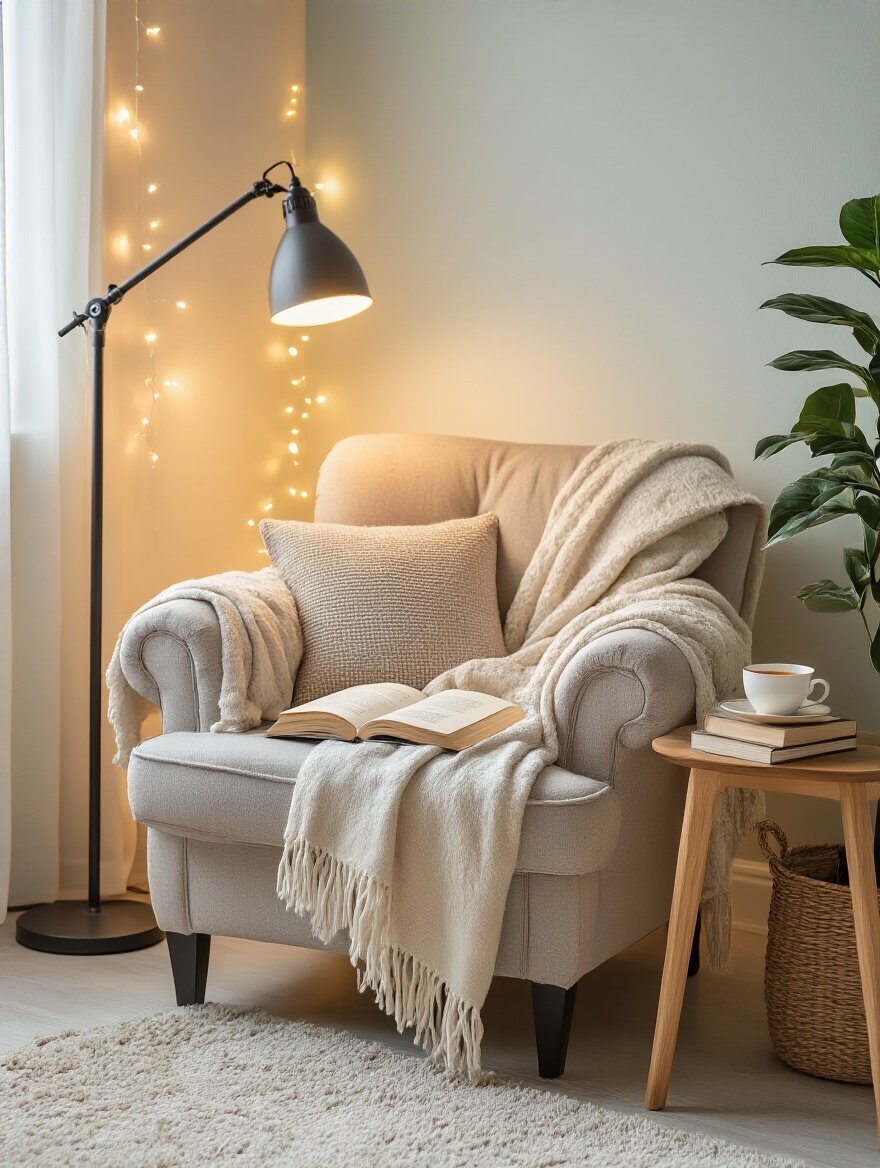
All you really need is a comfortable chair, a soft pillow and blanket, and good light. The chair doesn’t have to be huge; a small-scale armchair or even a large floor cushion can work. The key is the light. You need a dedicated task lamp—a floor lamp or a wall-mounted sconce—that provides direct, focused light for reading without straining your eyes. This simple combination transforms a dead corner into a purposeful retreat within your larger sanctuary.
A reading nook offers a perfect escape, a concept that can be expanded upon with furniture designed to serve multiple intelligent purposes.
17. Multi-Functional Furniture Hacks: Optimize Small Spaces Intelligently
If your bedroom is also your office, your gym, and your library, then multi-functional furniture isn’t a hack—it’s a survival strategy. The goal is to allow the room to transform to meet your needs, so you’re not sleeping in your office, you’re sleeping in your bedroom that contains an office. A Murphy bed that folds up to reveal a desk, a lift-top coffee table, or an ottoman that stores your workout gear are all ways to make one space serve multiple functions without feeling cluttered.
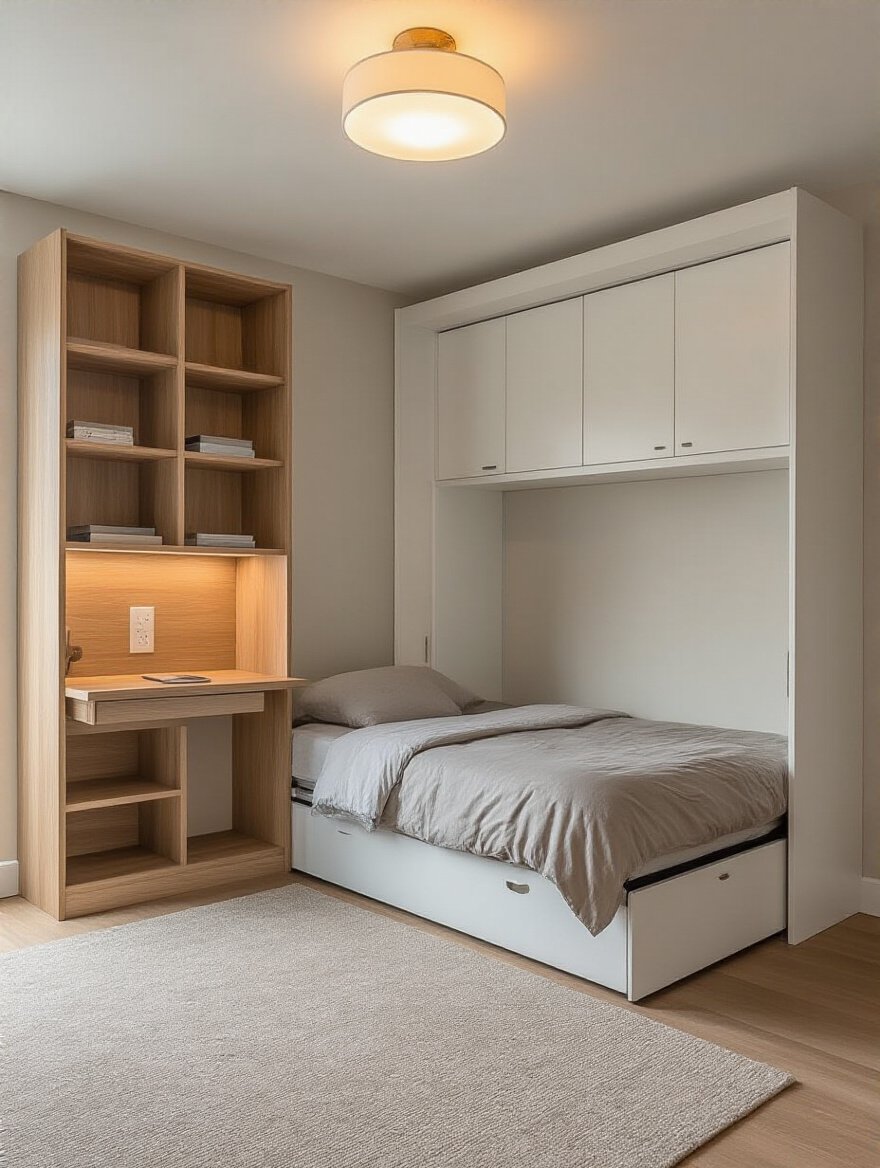
The hard-earned lesson here is that you get what you pay for. With multi-functional furniture, you’re buying the mechanism as much as the piece itself. A cheap Murphy bed with a clunky, unreliable mechanism is a nightmare. Before you buy, read reviews specifically about how easy it is to transform the piece. The function has to be seamless, otherwise you just won’t use it, and you’ll be left with a cramped, frustrating space.
Smart furniture choices make the most of every square inch, a feeling that can be further amplified by the clever use of mirrors.
18. Mirror Placement Magic: Amplify Light and Create Illusion of Space
Mirrors are pure magic when used correctly. Everyone knows they can make a room feel bigger, but the real trick is how they do it. A mirror is basically a second window. Placing a large mirror directly opposite a window will double the amount of natural light in the room, making the entire space feel brighter and more open.
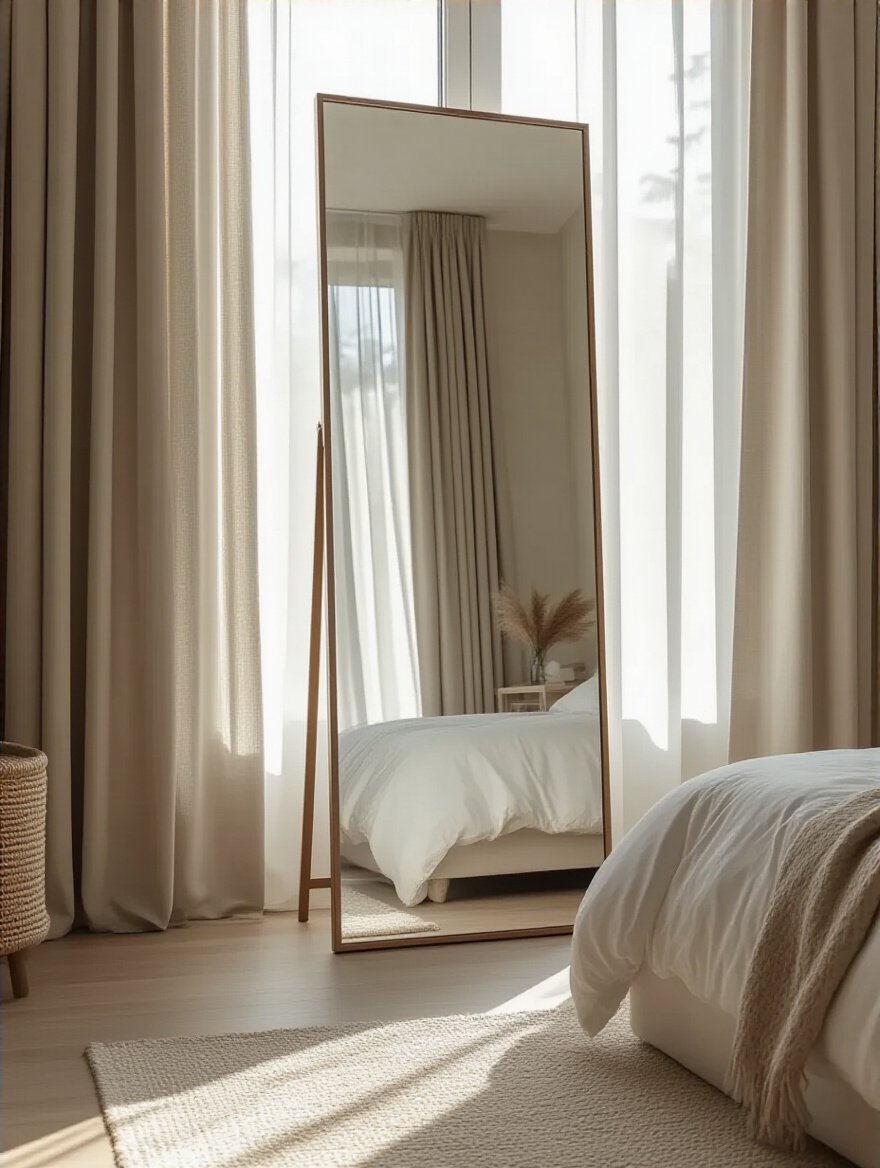
But here’s the pro move that most people miss: pay attention to what the mirror is reflecting. Before you hang it, have someone hold it up and look at the reflection from different points in the room. You want it to reflect something beautiful—the view out the window, a favorite piece of art, or a clear, open part of the room. The worst mistake is placing a mirror where it just reflects clutter or a messy doorway. That just doubles your visual stress.
A well-placed mirror is a problem-solver, turning a dark corner bright and a small space grand, much like a personal DIY project can turn a boring element into a statement piece.
19. DIY Headboard Transformation: A Budget-Friendly Personal Touch
Nothing makes a bedroom feel more uniquely yours than adding something you made yourself. A headboard is the perfect weekend DIY project because it has a huge visual impact but can be surprisingly simple and inexpensive to create. You can upholster a simple piece of plywood with foam and a fabric you love, paint a headboard shape directly onto the wall, or even hang a beautiful textile or an old wooden door.
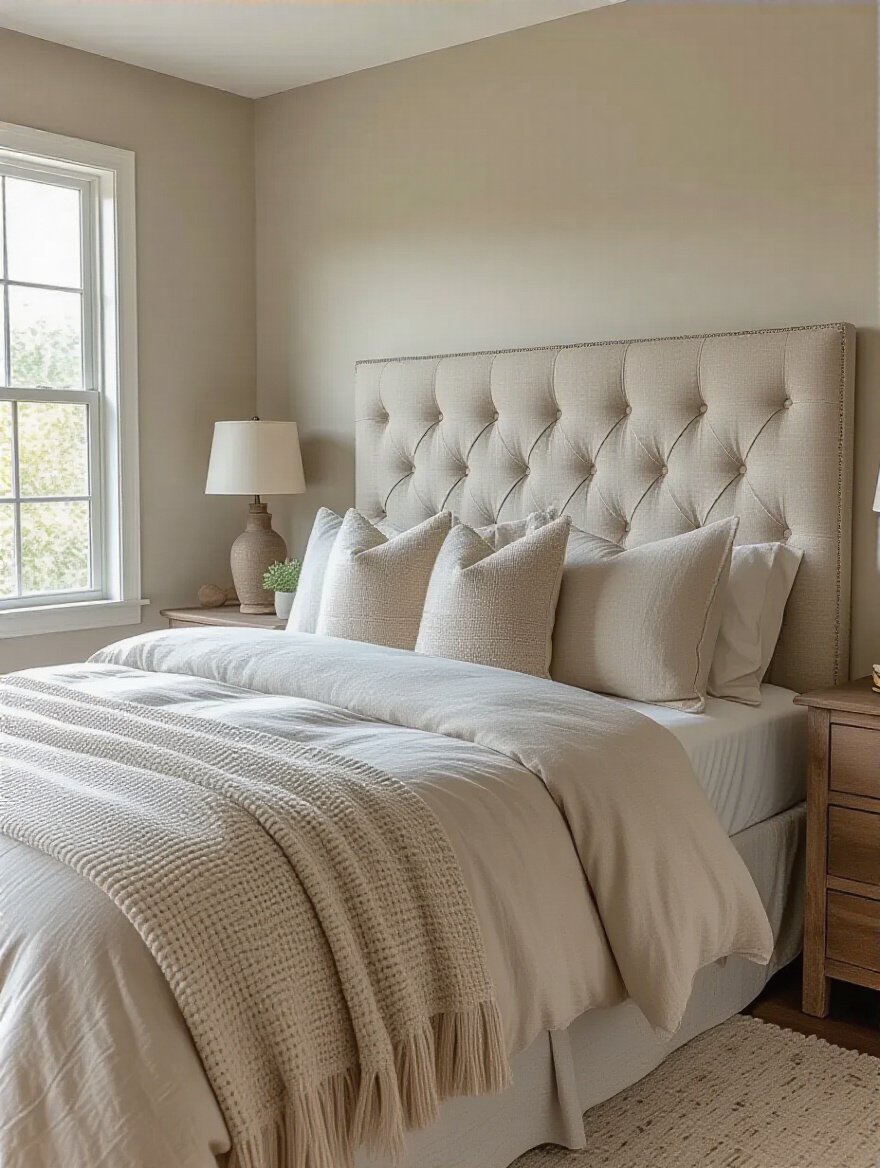
My favorite shortcut for this is to create a digital mock-up first. Just take a photo of your bed against the wall and use a simple app (even Instagram stories will work) to draw or overlay different shapes and colors. This helps you visualize the scale and style before you commit to buying materials. It’s a low-risk way to create a high-impact, custom piece that turns your bed into the true focal point of your sanctuary.
Embracing projects like this ensures your sanctuary is not just beautiful, but a true testament to your own creativity.
Conclusion
Transforming your bedroom into a sanctuary is not a one-weekend project. It’s an ongoing conversation with yourself about what you truly need to feel rested, safe, and restored. As we’ve seen, it’s less about the specific items you buy and more about the intention behind them. It’s the psychological comfort of a calming color, the physical ease of a clear pathway, the emotional connection to a piece of personal art.
Don’t feel like you have to do all 19 things at once. Pick one. Start with the thing that’s causing you the most stress. Is it the clutter? The bad lighting? The terrible sheets? Fix that one thing. Then move on to the next. Every small, intentional change you make is a step toward creating a room that doesn’t just house you, but actively nurtures you. That’s the real power of design, and it’s completely within your reach. Your ultimate oasis is waiting for you to build it.
